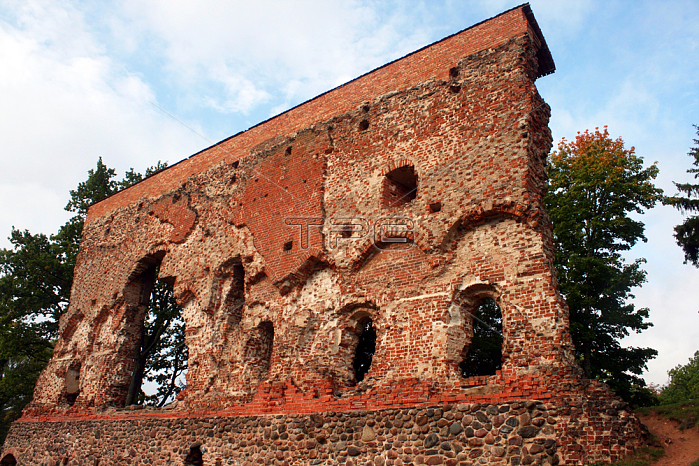
Estonia; city of Viljandi (German formerly: Fellin): main ruin of castle of the Teutonic Order (wall of former hall of knights and kitchen area). At the place of the present ruined castle; there was an older wooden fortress of Estonians. This is confirmed by Arabian Al-Idrisi (ca 1100 - 1166) who named it in his "Geographia" of 1154. As well; in 1211; Germans first tried to conquer the fortress high above Viljandi Lake. In 1223; German Schwertbr黡erorden conquered it against allied Estonians and Russians. Since 1283; Viljandi got the German name Velyn; which later became Fellin. Starting in 1224; here the Teutonic order (Deutscher Orden); who got Viljandi; in 1226 by imperial and before by papal order; within 200 years built one of the biggest and most powerful fortresses of the order. In 1470; Viljadi became capital city of the order; when Grand master (Gro適eister) Johann Wolthus von Herse chose Fellin as his residence. In 1481; tzar (Zar) Ivan III (Iwan III.) tried to conquer the castle; but failed. In 1560; Prince Kurbski of Moskovite Rus was successful and destroyed great parts of the castle. its total damge happened in 17th century; during the Polish-Russian War (German: Polnisch-Russischen Krieg). First reconstructions of the ruins happeend; in 1878 and 1879. In 1936; the castle area became a zoo with its star animal; "Juku; the elk" (Juku der Elch). Today; the castle ruins are used for open air music festivals.
| px | px | dpi | = | cm | x | cm | = | MB |
Details
Creative#:
TOP24931879
Source:
達志影像
Authorization Type:
RM
Release Information:
須由TPG 完整授權
Model Release:
No
Property Release:
No
Right to Privacy:
No
Same folder images:

 Loading
Loading